Posts Tagged ‘Environmental Investigation Agency’
Saturday, April 13th, 2013
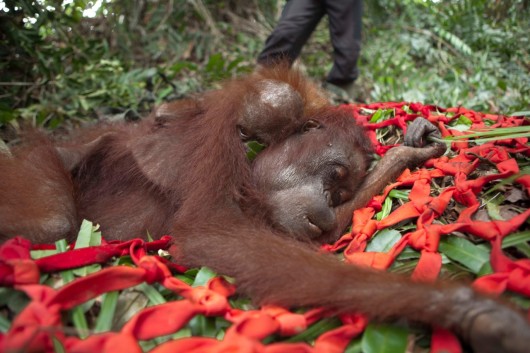 March 2013: she’s almost dead, like her entire species cornered in the wild March 2013: she’s almost dead, like her entire species cornered in the wild
.
<<Footage released 4th April 2013 shows starving orangutans being rescued from an oil palm concession in Borneo after their forest homes were bulldozed by a member of the Roundtable on Sustainable Palm Oil (RSPO), in flagrant violation of the body’s rules.
Conservationists have urged oil palm firm Bumitama Gunajaya Agro (BGA) to cease further clearing immediately amid credible concerns that more of the endangered species are trapped inside the concession and will die if not relocated.
.
[Bumitama is an Indonesian Oil Palm plantation company that cultivates Oil Palm trees and produces crude palm oil (CPO). It was established in 1996 by the Harita Group through its first acquisition of land bank in Central Kalimantan. In 2007, IOI Corporation bought a 33% stake in PT Bumitama Gunajaya Agro.
As of March 2012, Bumitama controls over 190,000 hectares of land bank and has planted 133,000 hectares of Oil Palm trees, mostly in Central and West Kalimantan. Bumitama owns 6 CPO mills (5 in Kalimantan and 1 in Riao), which produces more than 450,000 tons of CPO a year. The main buyers of their CPO include Wilmar, Sinar Mas, and Musim Mas. ]
 Dato’ Lee Yeow Chor
Group Executive Director, Dato’ Lee Yeow Chor
Group Executive Director,
IOI Group of Companies
.
According to RSPO statutes BGA should have carried out High Conservation Value assessments prior to clearing in the concession, setting aside areas that are home to the endangered species.
However, International Animal Rescue Indonesia (IAR Indonesia) and government conservation staff have already rescued four orangutans, including a pregnant adult and a baby, from the concession in Ketapang Regency, West Kalimantan. Other individuals remain at risk if BGA continues to ignore RSPO rules.
Adi Irawan, Program Director of IAR Indonesia Foundation in Ketapang, said:
“We know that there are more orangutans isolated in small patches of forest in this plantation along with other protected wildlife such as proboscis monkeys. All the animals in this plantation are under threat and therefore this company should stop all land clearing immediately, carry out habitat assessments and develop strategies to protect all the endangered wildlife in their estate”.
The concession is operated by BGA subsidiary PT Ladang Sawit Mas (LSM) in a forest buffer next to Gunung Palung National Park, an area that hosts one of the largest populations of Central Bornean orangutan (Pongo pygmaeus wurmbii) in West Kalimantan.
The footage released today shows IAR Indonesia’s Orangutan Rescue Team and the Regency Agency for Natural Resources Conservation (BKSDA) rescuing the orangutans from areas cleared by LSM, to move them to areas with sufficient food for their survival.
Karmele Llano Sanchez, Executive Director of IAR Indonesia Foundation, said:
“We were appalled to see the condition of these rescued orangutans. All of them had gone through long periods of starvation before we rescued them, as the area where they were found, since the company had cleared most of the forest, was too small to provide them with enough food. One of the rescued orangutans had lost her baby, probably killed before the rescue team arrived. More orangutans could die if this company does not take immediate action”.
According to Indonesian Law Act Number 5 year 1990 concerning the Conservation of Living Resources and their Ecosystems the killing of orangutans or other protected wildlife is prohibited and can be severely punished.>>
.
View Footage (click image):.
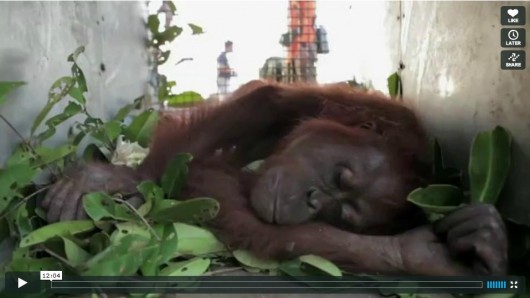 . .
Notes:
.
1. The Environmental Investigation Agency (EIA) is a UK-based Non Governmental Organisation and charitable trust (registered charity number 1145359) that investigates and campaigns against a wide range of environmental crimes, including:
- illegal wildlife trade
- illegal logging
- hazardous waste
- trade in climate and ozone-altering chemicals.
.
2. RSPO Criterion 7.3 dictates that new plantings since November 2005 cannot replace any areas required to maintain or enhance one or more High Conservation Value. This includes “Forest areas containing globally, regionally or nationally significant concentrations of biodiversity values (e.g. endemism, endangered species).”
• To view the footage of the rescue go to ^https://vimeo.com/63254306
• For further photos of the rescued orangutans please contact Tom Johnson at tomaszjohnson@eia-international.org
• Interviews are available on request: please contact Karmele Llano Sanchez (IARI) at karmele@internationalanimalrescue.org or Tom Johnson (EIA) at tomaszjohnson@eia-international.org
• Caption for attached picture: An adult female orangutan who was rescued with her baby by IAR Indonesia in Ketapang, March 2013.
.
[Source: ‘Conservationists urge RSPO member to cease rainforest destruction after starving orangutans rescued from concession’, 20130404, Environmental Investigation Agency on behalf of International Animal Rescue, West Kalimantan (Borneo) Indonesia]
.
HSBC loans $135 million to Bumitama Gunajaya Agro (BGA) Group
.
 . .
<<DBS Indonesia and HSBC (Hongkong and Shanghai Banking Corporation) together with its syndication banks have completed the final process of Syndicated Term Loan Facility for Bumitama Gunajaya Agro (BGA) Group. Due to the oversubscribed participation, the final loan amount provided for the facility has been upsized to USD 135 million from the original amount of USD 110 million.>>
[Source: ^http://www.hsbc.co.id/1/2/misc/media-release/21-oct-10]
 Arnott’s Tim Tam, proudly killing Orangutans
(it is one of Australia’s largest selling products that includes Palm Oil in its manufacture) Arnott’s Tim Tam, proudly killing Orangutans
(it is one of Australia’s largest selling products that includes Palm Oil in its manufacture)
.
<<Palm oil plantations are now the leading cause of rainforest destruction in Malaysia and Indonesia. In Southeast Asia alone the equivalent of 300 football fields are deforested every hour. At the current rate, experts believe Orang-utans will be extinct in the wild by 2013 (this year).
Palm oil and its derivatives are present in 50% of all packaged foods on our shelves. While 50% of products in Australian supermarkets contain Palm Oil, it is nearly impossible for consumers to be able to make an informed choice about which products to purchase. This is because under current food labelling laws, Palm Oil can be legally labelled as ‘Vegetable Oil’.
Australia’s current food regulations don’t require this truth in labelling.>>
.
[Source: ‘Food Labelling, ^http://www.nickxenophon.com.au/food-labelling]
.
.
Products blatantly continuing to include crude Palm Oil
.
Aldi Supermarkets
-Damora snack foods
-Belmont Biscuit co.
-GoldenVale cereals
-Dominion products
-Choceur chocolates
-Bramwells
-Sprinters chips
-Brookdale
-Milfina ice-cream
.
Arnott’s Biscuits
-Shapes (AP)
-Shapes Sensations (AP)
-Tim-Tams (AP)
-Wagon Wheels
-Mint Slice biscuit
-Royals
-Classic assorted
-Venetian
-Lemon Crisp
-Raspberry shortcake
-Arnott’s cookies
-Tiny Teddies
-Jatz Clix biscuits (savoury)
.
Coles Supermarkets (Coles brand range)
-“You’ll Love Coles” range (ice-cream, garlic bread, milk chocolate etc.)
-$mart Buy
-Coles Pastries: Donuts, Biscuits, Cakes, Muffins & Scrolls (AP)
.
Colgate-Palmolive
-Shampoos (AP)
-Conditioners (AP)
-Body wash (AP)
-Soaps (AP)
-Liquid hand-soap (AP)
-Shower gel (AP)
.
Colgate
-Toothpastes (AP)
-Mouthwash
-Shaving cream
.
Fonterra dairy products
-Dairy Milk
Anchor (Fonterra brand)
-Blue top milk
-Cheese singles
-Butter
Mainland cheeses (Fonterra brand)
-Edam cheese
-Colby cheese
-Tasty cheese
-Mild cheese
-Special reserve cheese range (AP)
.
Tip Top ice-creams (Fonterra brand)
-Joy Bar
-Soft serve
-Ice-creams in tub (AP)
-Ice-creams on cone (AP)
-Ice-creams on stick (AP)
.
General Mills
-Old El Paso tacos, dips, salsas & tortillas (AP)
-Betty Crocker products (AP)
-Cheerios breakfast cereal
-Nature Valley granola bars
-Fruit roll-ups
-Latina Pasta (AP)
.
Olay (owned by General Mills)
-Most cosmetics
.
Kraft
-Easy Mac
-Deluxe macaroni and cheese
-Peanut Butter
-Velveeta
-Cool Whip cream
.

.
Nabisco (owned by Kraft)
-Oreos (AP)
-Ritz Crackers
-Chips Ahoy! (biscuits)
-Wheat Thins
.
Heinz
.
-Beans
-Spaghetti
-Sauces & dressings
-Soups (AP)
-Frozen meals
-Desserts (AP)
-Wattie’s canned snack foods (AP)
-Weight watchers products
.
 . .
Mars Incorporated
.

.
-M&Ms
-Snickers
-Mars Bars
-Milky Way
-Twix
-Bounty
-Maltesers
-Doublemint
-Dove
.
Wrigley’s (owned by Mars)
-5 gum (AP)
-Extra gum (AP)
-Juicy Fruit gum (AP)
-Starburst lollies
-Skittles lollies
-Hubba Bubba bubble gum (AP)
-P.K. chewing gum (AP)
.
Mars Petcare
-Pedigree
-My Dog
-Dine
-Kitekat
-Optimum
-Schmakos
-Advance
-Whiskas
-Royal Canin
.
Sara-Lee
-Bavarians
-Cakes & cheesecakes (AP)
-Chocolate Pies & Fruit Pies
-Croissants & Danishes (AP)
-Crumbles & Puddings
-Ice Creams (AP)
-Lasagna
-Quiches (AP)
.
Snack Brands Australia
-Cheezels
-Samboy chips (AP)
-CC’s corn chips
-Thins chips (AP)
-French Fries
-Chickadees
-Colvan chips
.
Uncle Tobys
.
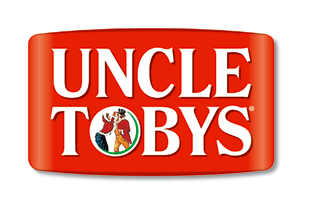 . .
-Fruit Breaks bars (AP)
-Chewy bars (AP)
-Bodywise bars
-Le Snak
-Roll Ups
.
‘AP’ = All products. Palm oil is found in all products or flavours of this specific brand. Example – palm oil is found in all flavours of Arnott’s Shapes: Plain, Chicken, Pizza, BBQ etc.
[Source: ^http://www.saynotopalmoil.com/]
.
“In 2008 Food Standards Australia and New Zealand (FSANZ) rejected an application for the compulsory labelling of Palm Oil, arguing that they have no legal capacity to hear the case.”
[Source: ^http://www.palmoilaction.org.au/shopping-guide.html]
.
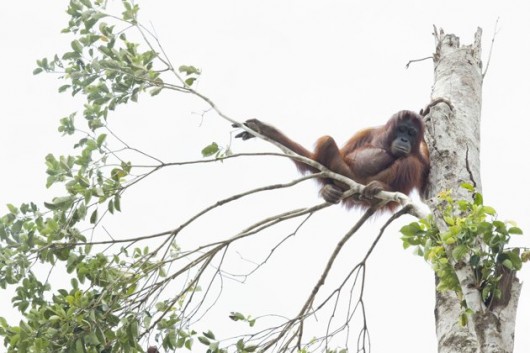 An adult orangutan looks down from its treetop home as the forest in Ketapang, Borneo, is bulldozed (Caters)
Source: ^http://uk.news.yahoo.com/orangutan-rescue-borneo–primates-deforestation-palm-oil-ketapang-mother-and-baby-104041487.html#tZX7oWc] An adult orangutan looks down from its treetop home as the forest in Ketapang, Borneo, is bulldozed (Caters)
Source: ^http://uk.news.yahoo.com/orangutan-rescue-borneo–primates-deforestation-palm-oil-ketapang-mother-and-baby-104041487.html#tZX7oWc]
.
Food Standards Australia New Zealand Board
.
Under the FSANZ Act, the FSANZ Board is selected by the Australian Minister for Health and Ageing in consultation with the Legislative and Governance Forum on Food Regulation and must include qualified people from all walks of life.
.
[Source: ^http://www.foodstandards.gov.au/scienceandeducation/aboutfsanz/theboard/, April 2013]
.
 |
|
Ms Philippa Smith AM [s.116(1)(a)]
Ms Philippa Smith, AM was appointed Chair of the FSANZ Board in July 2008. Ms Smith is a former Commonwealth Ombudsman, CEO of the Association of Superannuation Funds of Australia and the inaugural Chair of the Consumer’s Health Forum. She has developed strong strategic skills and extensive experience in ensuring effective accountability and governance structures across a number of portfolios. |
 |
|
Mr Steve McCutcheon (Chief Executive Officer) [s.116(1)(b)]
Mr McCutcheon, who holds a Bachelor of Economics degree and has undertaken further studies in public law and public policy, was appointed CEO of FSANZ in October 2007. Before his appointment, Mr McCutcheon held a number of senior executive positions in the Commonwealth Department of Agriculture, Fisheries and Forestry. During that time, he led the team that developed the new food regulatory framework for Australia and New Zealand under the auspices of the Council of Australian Governments. Mr McCutcheon also led the Australian delegation to annual sessions of the Codex Alimentarius Commission. |
 |
|
Dr Michele Allan [s.116(1)(f)]
Dr Michele Allan has strong leadership experience across many facets of the food industry. Her areas of expertise include manufacturing strategy, organisational strategy, risk and insurance leadership, food safety systems implementation, food packaging innovation and commercialisation. Dr Allan has held senior executive positions with Amcor Limited, Bonlac Foods, Bioinformatics Centre of Excellence Tasmania, Kraft Foods and ICI; and has also held board positions within both the private and public sectors. |
 |
|
Mr Peter Boyden [s.116(1)(g)]
Mr Peter Boyden is an internationally experienced CEO with extensive general management and marketing experience gained in consumer foods businesses in Australia, the United Kingdom, the Netherlands and Greece. Mr Boyden has been the Managing Director and regional Board member of the Unilever Australasian foods business and a Board member of the Australian Food and Grocery Council. His areas of responsibility have included the management of consumer marketing, product and packaging development, food production and general management, where he has focused on strategy development and portfolio management. |
 |
|
Professor Stephen Corbett [s.116(1)(f)]
Professor Stephen Corbett has had more than 20 years of experience as a public and environmental health physician, with qualifications in public health and medicine. His interests include environmental health risk assessment and management, regulatory policy and practice, and chronic disease prevention. Professor Corbett’s experience includes holding senior executive positions in NSW Health-Public Health; being Conjoint Associate Professor at the School of Public Health, University of Sydney and Western Clinical School, Westmead Hospital; and being Associate Editor on the journal Evolution, Medicine and Public Health. |
 |
|
Ms Jenni Mack [s.116(1)(d)]
Ms Jenni Mack has worked in consumer affairs since 1993 when she was Executive Director of the Australian Federation of Consumer Organisations. Her work has spanned food, chemicals, telecommunications, energy and financial services policy incorporating areas such as industry self-regulatory and co-regulatory practices, professional standards and codes of practice. Ms Mack has worked closely with regulators and government agencies on good regulatory science, community education, licensing, best practice enforcement and compliance schemes, and community and social research projects. |
 |
|
Dr Andrew McKenzie QSO [s.116(1)(c)]
Dr Andrew McKenzie is qualified as a veterinarian with post graduate qualifications in veterinary public health and has a background working for the New Zealand Ministry of Agriculture and Fisheries with a focus on the meat, seafood and other food industries. In 2002, Dr McKenzie set up the New Zealand Food Safety Authority and led it until his retirement in June 2010. He has extensive experience in domestic food safety policy and standards, as well as international food safety and trade standards at the bilateral and multilateral level. Dr McKenzie has a continuing interest in management and governance, as well as contemporary regulatory approaches to food safety/quality and trade, particularly around standard-setting. |
 |
|
Dr James (Gardner) Murray AO PSM [s.116(1)(f)]
Gardner Murray has veterinary medicine, surgery and management qualifications. Through his work in high level government positions and via his company—Gardner Murray Pty Ltd., Dr Murray has contributed to national and international developments in food safety, animal health, ‘One Health’ (collaboration between animal, human and environmental scientists and related disciplines to achieve optimal health), biosecurity, market access, emergency management, animal welfare, policy development and strategic planning. He has held and holds numerous high level Board, Commission and Committee positions at the national and international levels. |

|
|
Mr Tony Nowell CNZM [s.116(1A)]
Mr Tony Nowell has had extensive senior executive experience across various industries (including food) both internationally and within New Zealand. This has included holding positions such as CEO of Zespri International; Managing Director of Griffin’s Foods; Regional Vice President of Sara Lee Asia; Zone Manager for Sara Lee Indonesia, Philippines and Thailand; Managing Director of Sara Lee Indonesia; Managing Director of L’Oreal Indonesia; and Operations Manager of L’Oreal New Zealand. Mr Nowell’s other roles and responsibilities have included being the former Chair of the New Zealand Packaging Accord Governing Board and the New Zealand Government Food and Beverage Taskforce; and include Chairmanship of the New Zealand Forest Research Institute and Wellington Drive Technologies, as well as directorships at New Zealand Food Innovation Auckland and the Export Advisory Board of Business New Zealand. Mr Nowell has represented New Zealand as a member of the APEC Business Advisory Council since 2007. |
 |
|
Dr David Roberts [s.116(1)(g)]
Dr David Roberts is a food and nutrition Consultant with extensive experience in health and science. He has expertise in public health, food science, food allergy, human nutrition, food safety, food industry, food processing/retail, government and regulation. Dr Roberts was the Deputy CEO and scientific and technical Director of the Australian Food and Grocery Council for 5 years until October 2007. Prior to that, he had held the Foundation Chair in Nutrition and Dietetics (established 1991) at the University of Newcastle for 10 years. Dr Roberts was at Sydney University for 12 years teaching and researching in nutritional biochemistry. He is a former Chair of the Federation of Australasian Nutrition Organisations, former President of the Nutrition Society of Australia (3 years), former Chair of the NSW Branch of AIFST (1 year), former Chair of the inaugural Complementary Medicines Evaluation Committee of the Therapeutic Goods Administration (4 years) and former member of the editorial board of the British nutrition foundation (10 years+). |
 |
|
Mr Neil Walker JP [s.116(1)(ca)]
Mr Neil Walker is a food scientist with 35 years of experience in the dairy industry in New Zealand. He is a fellow of both the Institute of Chemistry and the New Zealand Institute of Food Science and Technology (NZIFST); and was the Dairy Chair of the NZIFST. He has had experience as Chair, director, trustee and committee member in relation to public councils and authorities; private trusts; companies and organisations; and national, community, charitable and family entities. |
Tags: Bumitama Gunajaya Agro, Environmental Investigation Agency, Food Standards Australia and New Zealand, FSANZ, Gunung Palung National Park, International Animal Rescue Indonesia, orang-utan, orang-utan extinction, palm oil, palm oil plantations, Roundtable on Sustainable Palm Oil
Posted in Orang-utans, Threats from Deforestation, Threats from Farming | No Comments »
Add this post to Del.icio.us - Digg
Wednesday, September 12th, 2012
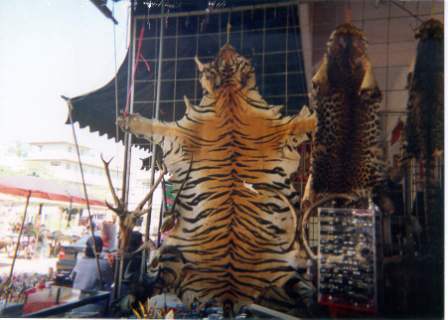
DELHI, INDIA: Tiger Range Countries meet in Delhi, India next week (May 2012) to evaluate progress of the Global Tiger Recovery Programme (GTRP) in what will be a true test of their national commitment to end the tiger trade.
The GTRP was signed into existence in November 2010 in St Petersburg, Russia, with the common objective of doubling the world’s wild tiger population by 2022.
The agenda for the Delhi meeting, from May 15-17, includes issues which to date have received too little attention in this forum – demand reduction and effective enforcement.
With final preparations for the meeting underway, the Environmental Investigation Agency (EIA) today warned that concrete action is needed to shut down tiger breeding operations and destroy their stockpiles of tiger skins and bones if the GTRP is to retain serious credibility.
EIA lead campaigner Debbie Banks said: “Successful demand reduction will be dependent on the closure of operations that breed tigers for trade in their parts and derivatives, and those that provide the living specimens to stock such operations.”
Operations in Thailand, Laos and Vietnam have been implicated in the illegal international trade; in China, breeders are allowed to sell farmed tiger skins on the domestic market.
“This trade simply serves to perpetuate demand, undermining enforcement efforts and sending mixed messages to consumers,” added Banks.
Tiger Farming was hotly debated in 2007 at the 14th Meeting of the Conference of Parties to the UN Convention on International Trade in Endangered Species (CITES), where the majority of Parties voted against domestic and international trade in parts of farmed tigers and called for a phasing out of such operations.
No country has yet reported on what action is being taken to fulfil the CITES decision.
While there have been recent high profile seizures and arrests in Thailand, and Vietnam has prosecuted at least one tiger farm owner, there is no report of action against tiger farmers in Laos; China stated in March 2011 that it had inspected tiger breeding operations, but it has not shared information on any convictions of those found selling tiger bone and products.
China also allows tiger breeding operations to maintain freezers full of tiger carcasses, instead of destroying them as urged by CITES. While tiger bone trade is currently prohibited, China has a scheme for registering, labelling and selling the skins but refuses to disclose how many skins have entered the scheme.
“How can these stockpiles possibly be justified?” asked Banks. “Maintaining stockpiles serves no conservation purpose; it only creates confusion and speculates that one day these parts may be traded for profit. That runs completely counter to a commitment to end tiger trade and totally undermines efforts at demand reduction.
“For the credibility of the GTRP, we need to see unequivocal and emphatic action to shut down all commercial tiger breeding operations and to transparently destroy the stockpiles.”
.
- The Environmental Investigation Agency (EIA) is a UK-based Non Governmental Organisation and charitable trust (registered charity number 1040615) that investigates and campaigns against a wide range of environmental crimes, including illegal wildlife trade, illegal logging, hazardous waste, and trade in climate and ozone-altering chemicals.
- Skin trade registration scheme. In 2007, China introduced a mechanism for registering and selling skins from ‘legal’ sources, including captive tigers. EIA has been trying to find out how many skins have been registered, sold, etc, and how legality is determined – read more at http://www.eia-international.org/enforcement-and-asian-big-cats
- Auctions of tiger bone wine. In 2011, NGOs reported there was to be a sale of Tiger Bone Wine in Beijing. This was stopped by the SFA after an outcry, but EIA research shows many more sales were advertised and may have gone ahead. We urgently need clarification on these – read more at http://www.eia-international.org/tiger-bone-wine-auctions-in-china
- Enforcement action. China has recently reported a number of enforcement actions on wildlife crime in general, but from the reports available it seems it has not focused efforts in the provinces EIA has highlighted as key to the tiger and Asian big cat trade. Criminals we have identified trading in Asian big cat parts between 2005-09 were still operating in July 2011. China has not provided any evidence of targeted enforcement action against known criminals and trade hotspots.
.
[Source: ‘Tiger Countries Must Shut Breeding Centres’, Environmental Investigation Agency (UK), www.eia-international.org, ^http://www.eia-international.org/key-features-of-asian-big-cat-skin-and-bone-trade-in-china-in-2005-2011]
.
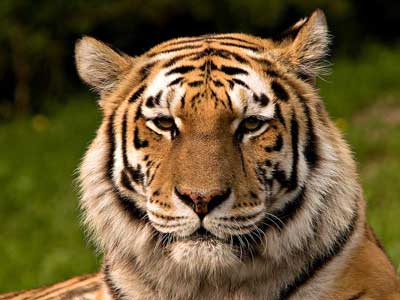 Endangered Tiger Endangered Tiger
.
Tags: Asian big cat trade, China, cites, Endangered Tiger, Environmental Investigation Agency, Global Tiger Recovery Programme, GTRP, illegal wildlife trade, Laos, Thailand, Tiger breeding centres, Tiger Farming, Tigers, UN Convention on International Trade in Endangered Species, Vietnam
Posted in Threats from Poaching and Poisoning, Tigers | 1 Comment »
Add this post to Del.icio.us - Digg
Thursday, February 23rd, 2012
The following article is a press release by UK-based NGO, The Environmental Investigation Agency (EIA), of 20120124 entitled ‘Conservation on the Front Line – Muara Tae’s Last Stand Against Big Palm Oil’
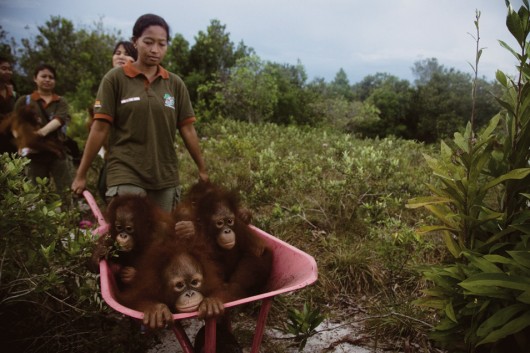 Their ancient rainforest home clearfelled for bloody Palm Oil,
now these Orang-utans are homeless in their own homeland
[Source: ^http://www.pdnphotooftheday.com/2010/05/4673]
(Click photo to enlarge) Their ancient rainforest home clearfelled for bloody Palm Oil,
now these Orang-utans are homeless in their own homeland
[Source: ^http://www.pdnphotooftheday.com/2010/05/4673]
(Click photo to enlarge)
.
MUARA TAE, EAST KALIMANTAN (Borneo, Indonesia):
The fate of a Dayak indigenous community, deep in the interior of East Kalimantan (Borneo) demonstrates how Indonesia must safeguard the rights of indigenous people if it is to meet ambitious targets to reduce emissions from deforestation.
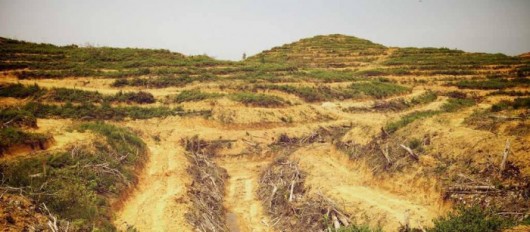 Cleared land at Muara Tae
(c) EIA/Telapak Cleared land at Muara Tae
(c) EIA/Telapak
.
The Dayak Benuaq of Muara Tae, in West Kutai Kabupaten (Indonesia), today face a two-pronged assault from palm oil companies aggressively expanding into their ancestral forests. Together with Indonesian NGO Telapak, the community is manning a forest outpost around the clock in a last ditch attempt to save it from destruction.
The London-based Environmental Investigation Agency (EIA) has witnessed at first-hand the Dayak Benuaq’s struggle, and how their sustainable use of forests could help Indonesia deliver on its ambitious targets to reduce greenhouse gas emissions.
EIA Forests Team Leader Faith Doherty said: “There are more than 800 families in Muara Tae relying on the forests for their food, water, medicine, culture and identity. Put simply, they have to keep this forest in order to survive.
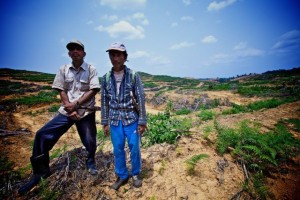 Villagers on cleared land at Muara Tae
(c) EIA/Telapak Villagers on cleared land at Muara Tae
(c) EIA/Telapak
.
“The rhetoric from the President of Indonesia on curbing emissions by reducing deforestation is strong but on the front line, where indigenous communities are putting their lives at risk to protect forests, action is sorely missing.
“Giving these communities, such as the Dayak Benuaq, the rights they deserve is a vital step to reduce catastrophic levels of deforestation in Indonesia.”
President Yudhoyono has pledged to reduce carbon emissions across the archipelago by 26 per cent by 2020 against a business-as-usual baseline, alongside delivering substantial economic growth.
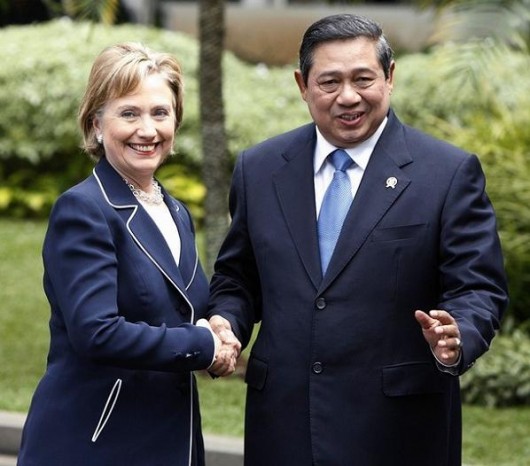 Self-serving bullshit artist
– take your pick Self-serving bullshit artist
– take your pick
.
Plantation expansion will inevitably be a significant element of growth, but it has historically been a major driver of emissions and it is widely acknowledged that in order avoid them, expansion must now be directed to ‘degraded’ lands.
As a result of weak spatial planning, however, the forests of Muara Tae are identified as ‘APL’, a designation meaning they are not part of the national forest area and are open to exploitation. The theft of indigenous forests also raises serious questions as to what form of ‘development’ these plantations offer.
In indigenous communities such as the Dayak Benuaq of Muara Tae, Indonesia has perhaps its most valuable forest resource. It is due to their sustainable methods, honed over generations, that the forest even remains.
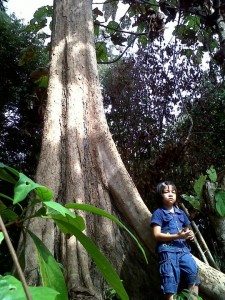 Benuaq girl and ncap payang tree
(c) EIA/Telapak Benuaq girl and ncap payang tree
(c) EIA/Telapak
.
Telapak president Ambrosius Ruwindrijarto said:
“Together with the community, we have not only been protecting the last forests but also planting new Ulin and Meranti saplings to enhance it. These people are the true guardians of the forest and their fate is entwined with it.”
Muara Tae has lost more than half of its land and forests during the past 20 years to mining companies. The impact has been tangible; the villagers’ water source has dried up and they must now routinely make a 1km journey to collect clean water.
The remaining forest is home to a large number of bird species including hornbills, the emblem of Borneo. There are about 20 species of reptiles and it is also a habitat for both proboscis monkeys and honey bears.
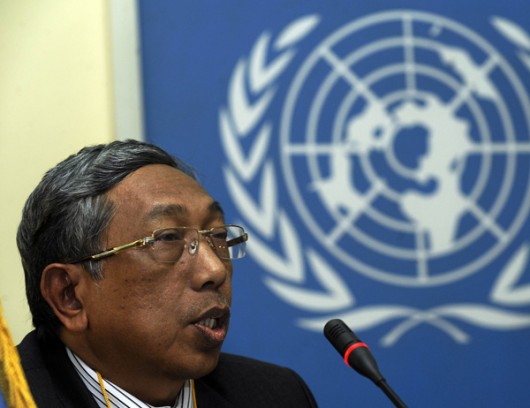 Indonesia’s Environment Minister Gusti Hatta,
all talk..so…’what does an Orang-Utan look like?‘
. Indonesia’s Environment Minister Gusti Hatta,
all talk..so…’what does an Orang-Utan look like?‘
.
The latest land-grabs have taken place since January 2010, when the local Bupati (regional government official), Ismail Thomas, issued plantation permits to two palm oil companies: Malaysian-owned PT Munte Waniq Jaya Perkasa (PT MWJP) and PT Borneo Surya Mining Jaya, a subsidiary of Sumatran logging, mining and plantation conglomerate Surya Dumai.
While the Norwegian Government has been instrumental in financially backing efforts to reduce deforestation in Indonesia through the REDD+ initiative, it has also invested in the parent company of PT MWJP through its sovereign wealth fund.
Pak Singko, a leader of the Dayak Benuaq of Muara Tae, said: “We are calling for help from people everywhere in protecting our forests and ancestral land. We are being squeezed from all sides by mining and plantation companies.
.
“This is the last remaining forests that we have and the only land we have to survive.
If my forests are gone, our lives will end.”
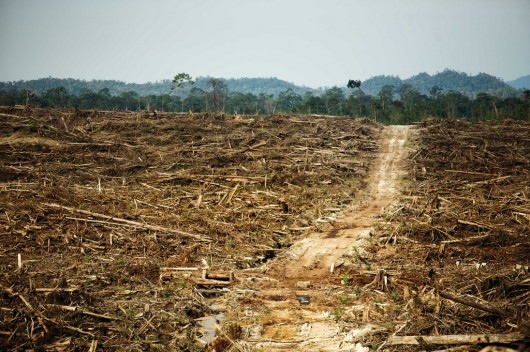 Cargill’s ecological facism for its self-serving Palm Oil
The destruction of primary rainforest by Duta Palma. West Kalimantan, Borneo.
Cargill was a key purchaser of palm oil from this notorious rainforest destroyer up until 2008. Cargill’s ecological facism for its self-serving Palm Oil
The destruction of primary rainforest by Duta Palma. West Kalimantan, Borneo.
Cargill was a key purchaser of palm oil from this notorious rainforest destroyer up until 2008.
[Source: Photo: David Gilbert/RAN, ^http://www.flickr.com/photos/rainforestactionnetwork/5551935164/]
(Click photo to enlarge)
.
The above photo is from an investigative report from Rainforest Action Network that presents evidence that (US conglomerate) Cargill is operating two undisclosed palm oil plantations in West Kalimantan, Indonesia.
 Cargill’s pathetic claim of its Corporate Responsibility in Indonesia Cargill’s pathetic claim of its Corporate Responsibility in Indonesia
[Source: Cargill corporate website: ^http://www.cargill.com.au/en/index.jsp].
.
When William Wallace Cargill founded our company in 1865, he deliberately set out to ensure that we earned and maintained a reputation for integrity, which he saw as a key differentiator in those times.
Corporate responsibility is part of everything we do. It is a company-wide commitment to apply our global knowledge and experience to help meet complex economic, environmental and social challenges wherever we do business. It is a process of continually improving our standards, our actions and our processes. Corporate responsibility extends not only to our own operations but to our wider communities and is based on four commitments:
- We will conduct our business with high levels of integrity, accountability and responsibility.
- We will develop ways of reducing our environmental impact and help conserve natural resources.
- We will treat people with dignity and respect.
- We will invest in and engage with communities where we live and work.
We recognize our continued success depends on the growth and health of our communities and partners, as well as the vitality and conservation of our natural resources. We are working with a diverse group of global, national and local organizations to support responsible economic development, help protect the environment and improve communities.
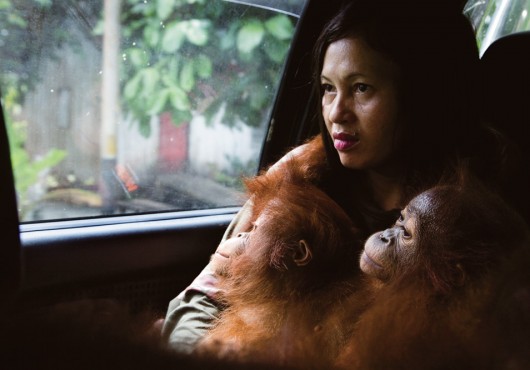 Forced eviction, forced immigration
Orang-Utan orphans fleeing their ravaged parents and their ravaged ancestral homes
Forced eviction, forced immigration
Orang-Utan orphans fleeing their ravaged parents and their ravaged ancestral homes
Present us an American citizen accepting of such home eviction!
.
ED: Cargill’s eco-rape and eco-plunder policy across Indonesia’s vulnerable Borneo (Kalimantan) demonstrates that Cargill’s above public relations spiel is clearly crap! This is a wealthy United States corporate exploiting a poor country’s precious rainforest ecosystems, buggering local indigenous peoples and driving the extinction of the endangered Orang-Utan. If you work for Cargill or have shares in Cargill yoiu may as well be associated with the arms suppliers to the Syrian president Bashar al-Assad and his regime.
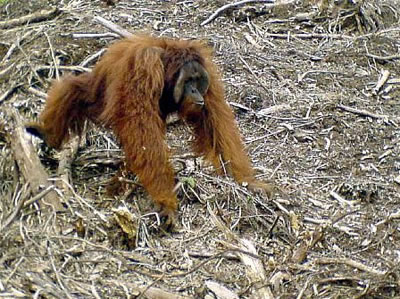 Not just home invasion, but complete ecological erasion
Cargill is calling in the A-Bomb to Orang-Utans
What United States citizen would tolerate this?
911 is being inflicted on vulnerable species by the United States Not just home invasion, but complete ecological erasion
Cargill is calling in the A-Bomb to Orang-Utans
What United States citizen would tolerate this?
911 is being inflicted on vulnerable species by the United States
.
.
 Cargill’s worldwide president and COO Gregory R. Page
His life won’t end in devastation, but he drives devastation in vulnerable Kalimantan – in secret! Cargill’s worldwide president and COO Gregory R. Page
His life won’t end in devastation, but he drives devastation in vulnerable Kalimantan – in secret!
.
Further Reading:
.
[1] ‘Villagers face off against palm oil firm’s bulldozers‘, by EIA, 20111123, ^http://www.eia-international.org/villagers-face-off-against-palm-oil-firms-bulldozers
.
[2] ‘Orangutan ‘killers’ on trial over slaughtering primates for pest control at palm oil plantation‘, by Damien Gayle, Daily Mail, 20120208, ^http://www.dailymail.co.uk/news/article-2097946/Orangutan-killers-trial-slaughtering-primates-pest-control-palm-oil-plantation.html
.
Tags: ancient rainforest, Cargill, deforestation, deforestation in Indonesia, EIA, Environmental Investigation Agency, forest exploitation, Gregory R. Page, Gusti Hatta, Hillary Clinton, Indonesia, Indonesian palm oil plantations, Kalimantan, Logging, logging Borneo, Meranti, Murara Tae, orang-utan, palm oil, palm oil plantations, payang tree, President of Indonesia, PT Borneo Surya Mining Jaya, PT Munte Waniq Jaya Perkasa, Sumatran logging, Surya Dumai, Susilo Bambang Yudhoyono, Telapak, Ulin, United States
Posted in Kalimantan (ID), Orang-utans, Threats from Farming | No Comments »
Add this post to Del.icio.us - Digg
Monday, August 29th, 2011
[The following article was initially published by Tigerquoll on CandoBetter.net on 20090730 under title ‘African Elephants – still slaughtered for tusk (‘ivory’) trinkets by backward Japanese and Chinese‘, with some modifications]
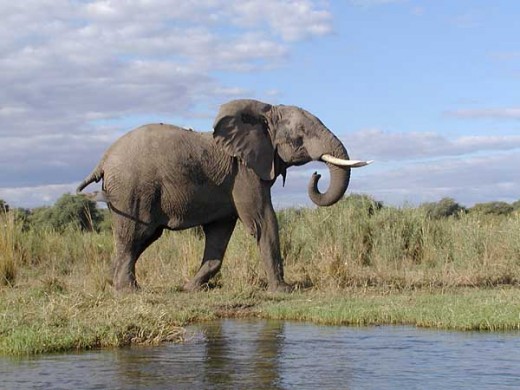 The magnificent African Bush Elephant bull (male) walking tall in its native savannah homeland
The magnificent African Bush Elephant bull (male) walking tall in its native savannah homeland
.
Out of Victorian colonial exploits of the 19th Century, elephant tusks could be found butchered and refined into expensive goods, notably billiard balls, piano keys, Scottish bagpipes, garment buttons, letter openers and for many ornamental items otherwise considered mere ‘trinkets’.
After the elephant tusk (‘ivory’) trade had decimated the African Elephant population from 1.3 million to 625,000, finally in 1989 the Environmental Investigation Agency (EIA) imposed a ban on this international elephant tusk (ivory) trade.
Ten years on, Zimbabwean dictator, Robert Mugabe, lifted the ban along with Botswana, Namibia, and South Africa and legalised the sale of elephant tusks from elephants they claimed (a) had died naturally or (b) been shot because they were violently aggressive or for ‘problem-animal’ control. In 1999, the Convention on International Trade in Endangered Species of Wild Fauna and Flora (CITES) authorized an auction of 50 tons of elephant tusks (ivory) from these four countries to the value of USD$5 million. Notably, the demand for elephant has been driven outside the African continent, in this episode mainly by Japan.
One could find a comparable solution for controlling Robert Mugabe…
 Tool of the Willing
(for just one day hire, …’our troubles there would be over very quickly’.)
~ borrowed from Colonel Walter E. Kurtz. Tool of the Willing
(for just one day hire, …’our troubles there would be over very quickly’.)
~ borrowed from Colonel Walter E. Kurtz.
.
In 2008, China was also given permission to become a licensed buyer of elephant tusks (ivory) and this followed 108 tons of elephant tusks (ivory) being auctioned from these same four African countries, representing the death of over 10,000 African elephants.
.
“The growing demand for elephant tusks (ivory) has increased black market prices from $200 per kilo to $850 per kilo in the past four years thus creating a big financial incentive for poachers. Michael Wamithi, program director for International Fund for Animal Welfare’s global elephants program, and former director of the Kenya Wildlife Service, declared: “An estimated 20,000 elephants are slaughtered annually for the trade in their tusks. Many African elephant range states clearly do not have the capacity or resources to combat these massive attacks on their countries’ wildlife heritage and the burgeoning markets in China are only fuelling these attacks.”
.
The Environmental Investigation Agency (EIA), which exposes environmental crimes, said CITES had ignored appeals from other African nations not to increase pressures on their elephant populations which were already struggling with wars, instability, droughts and poverty. EIA chairman Allan Thornton said:
“Responsibility for the poaching of 20,000 elephants in Africa each year will now lie with those who supported China obtaining legal ivory trade even though they continue to be the world’s biggest destination for poached ivory.”
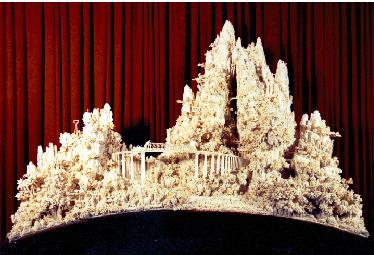 This elephant tusk (ivory) carving (photo) is a gift from China presented to the United Nations in 1974.
It depicts the Chengtu-Kunming railway, which was opened to traffic in 1970.
The sculpture was carved from eight elephant tusks. In elephant terms, four mature bull elephants were killed for this elaborate trinket. This elephant tusk (ivory) carving (photo) is a gift from China presented to the United Nations in 1974.
It depicts the Chengtu-Kunming railway, which was opened to traffic in 1970.
The sculpture was carved from eight elephant tusks. In elephant terms, four mature bull elephants were killed for this elaborate trinket.
One wonders whether the United Nations is still pleased with its eight bull elephant tusk trophy (shot and hacked off from a bull elephant like that above)?
.
.
Chinese, Japanese and Thais still Elephant Poaching in Africa
.
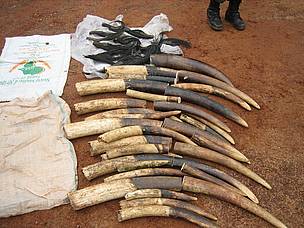
China and Japan bought 108 tonnes of ivory in another “one-off” sale in November 2008 from Botswana, South Africa, Namibia and Zimbabwe. At the time the idea was that these legal ivory sales may depress the price, thereby removing poaching pressure, an idea supported by both Traffic and WWF.
China’s increased involvement in infrastructure projects in Africa and the purchase of natural resources has alarmed many conservationists who fear the extraction of wildlife body parts is increasing. Since China was given “approved buyer” status by CITES, the smuggling of ivory seems to have increased alarmingly. Although, WWF and Traffic who supported the China sale, describe the increase in illegal ivory trade a possible “coincidence” others are less cautious. Chinese nationals working in Africa have been caught smuggling ivory in many African countries, with at least ten arrested at Kenyan airports in 2009. In many African countries domestic markets have grown, providing easy access to ivory, although the Asian ivory syndicates are most destructive buying and shipping tonnes at a time.
Contrary to the advice of CITES that prices may be depressed, and those that supported the sale of stockpiles in 2008, the price of ivory in China has greatly increased. Some believe this may be due to deliberate price fixing by those who bought the stockpile, echoing the warnings from the Japan Wildlife Conservation Society on price-fixing after sales to Japan in 1997, and monopoly given to traders who bought stockpiles from Burundi and Singapore in the 1980s. It may also be due to the exploding number of Chinese able to purchase luxury goods.
Despite arguments prevailing on the ivory trade for the last thirty years through CITES, there is one fact that virtually all informed parties now agree upon: poaching of African elephants is now seriously on the increase.’
.
.
‘Shopping habits of China’s ‘suddenly wealthy’
[Source: by Rose Gamble, freelance journalist, FT.com, 20090821, ^http://www.ft.com/cms/s/2/9271a266-8d21-11de-a540-00144feabdc0.html#ixzz1WPkaKde6, accessed 20110829]
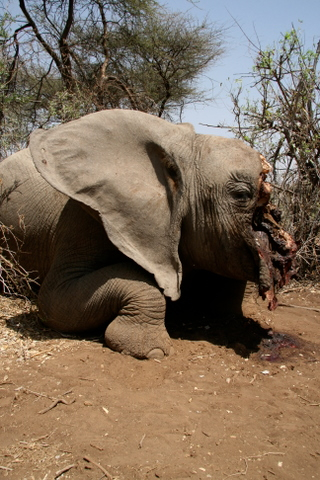
.
Ivory:
‘For more than 7,000 years, Chinese artisans have been crafting elephant ivory. Favoured by the Imperial household as far back as the Qing dynasty (1680), ivory has an illustrious reputation and an association with the wealthy and elite. But in 1989, the trading of ivory was banned worldwide through the Convention on International Trade in Endangered Species (Cites), after more than half of Africa’s 1.3 million elephants were poached in a single decade. And yet, with a carving trade established in antiquity and a burgeoning middle class who, for the first time, can afford to buy ivory, China remains its biggest importer.
As Asian elephant herds dwindle, African elephants have become the only source of ivory.
In late 2008, Cites authorities allowed China to bid with Japan for tusks from official stockpiles – consisting of ivory collected from elephants that had died a natural death – in four southern African countries. In an open declaration of a continuing demand, 12 Chinese traders bought 62 tonnes at an average price of $144 per kilo. Since this legal purchase, more than 11 tonnes of illegal African ivory have been impounded en route to China.
Elephant poaching largely takes place in central Africa, where poverty and political instability are rife. Chronic unemployment, the availability of firearms and corruption all facilitate the illegal ivory trade. These regions are also home to unregulated domestic ivory markets, where carved items are bought and sold. According to ivory expert Esmond Martin, the majority of buyers are Chinese. In a scramble for Africa’s minerals and resources, the continent has seen a recent influx of Chinese workers – a presence that is visibly reflected in the illegal retailing of ivory. On a recent trip to Addis Ababa, Ethiopia, Martin recorded 1,433 items of ivory openly displayed in the city’s main streets and central market. Among these were 149 pairs of freshly carved ivory chopsticks, selling for $16 each – in sharp contrast to a Chinese retail price of $139 – and signature stamps and jewellery. All of these items were small enough to potentially smuggle through customs.
Martin had previously estimated that 4,900 to 12,000 elephants from central Africa were killed each year to supply tusks to the craftsmen of Africa, China and Thailand.
Conservationists are deeply concerned. According to Barbara Maas, CEO of Care for the Wild International: “With the number of Chinese nationals resident in Africa rising, and poaching on the increase, the frontline between supply and demand for ivory is now perilously close, with a disastrous outcome for elephants.”
.
..
‘Campaigners’ fear for elephants, and their own credibility’
[Source: The Economist, 20080717, ^http://www.economist.com/node/11751304 ]
.
‘Nobody can deny that China’s black market was rampant until recently. In a report to the UN leaked by the Environmental Investigation Agency (EIA), a campaigning group, this month, Chinese officials admitted that between 1991 and 2002 they had lost sight of 121 tonnes of ivory, the equivalent of the tusks from 11,000 elephants.
Is China observing the CITES rules now? A brief visit to China in 2007 by inspectors from the CITES secretariat suggested that things had improved: they said that ivory was becoming harder to find, though they came across a shop in the city of Xi’an with ivory carvings of dubious provenance. A bigger investigation was carried out by TRAFFIC, an independent British-based group that monitors wildlife trade. After studying 10,000 shops between 2006 and 2008, it reported a progressive decline in the availability of illegal ivory. This had coincided with greater police vigilance.
The idea that China is cleaning up its act got another boost in March, when over 750kg (1,650lb) of raw ivory was seized in Guangxi Province. As CITES notes, the penalties for illegal trading include life imprisonment and death. But the EIA, which uses undercover methods to probe the trade, says things are not as good as they seem; in 2007 its researchers found a roomful of illegal ivory, including an uncut tusk, for sale in the city of Dalian. Last month they made a small find in Gansu province.
A more interesting question is how the legal sales now in prospect will affect the black market. A fresh supply of legal ivory may depress the price, and reduce the incentive to poach. TRAFFIC notes that after a legal auction in 1999, the price fell; this led to a decline in poaching over five years. For doctrinaire types, who oppose all trade in ivory, the forthcoming sale is not just a challenge to endangered animals; it could be a threat to the credibility of their best-loved arguments.’
.
.
‘Data shows illegal ivory trade on rise’
[Source: World Wildlife Fund (WWF), Cambridge, UK, 20091116, ^http://wwf.panda.org/wwf_news/?uNewsID=180702, accessed 20110829]
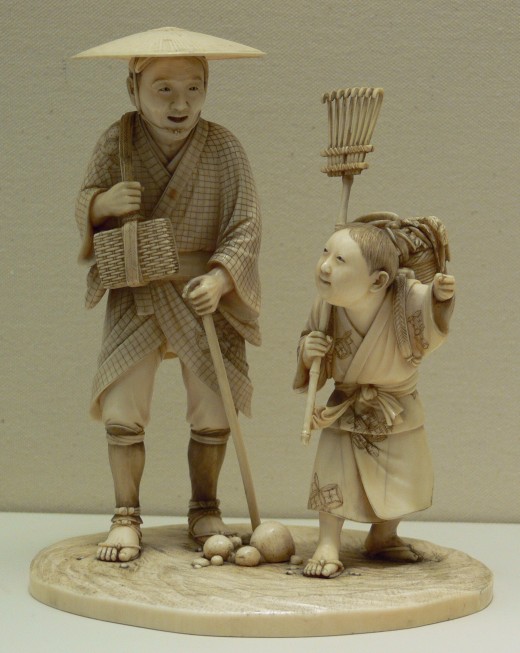
.
‘The illicit trade in ivory, which has been increasing in volume since 2004, moved sharply upward in 2009, according to the latest analysis of seizure data in the Elephant Trade Information System (ETIS).
ETIS, one of the two monitoring systems for elephants under CITES (the Convention on International Trade in Endangered Species of Wild Fauna and Flora) but managed by TRAFFIC, holds the world’s largest collection of elephant product seizure records.
The analysis, undertaken in advance of the 15th meeting of the Conference of the Parties (CoP15) to CITES, was based upon 14,364 elephant product seizure records from 85 countries or territories since 1989, nearly 2,000 more records than the previous analysis, in 2007.
The remarkable surge in 2009 reflects a series of large-scale ivory seizure events that suggest increased involvement of organized crime syndicates in the trade, connecting African source countries with Asian end-use markets. The ETIS data indicate that such syndicates have become stronger and more active over the last decade.
There continues to be a highly significant correlation between large-scale domestic ivory markets in Asia and Africa and poor law enforcement, suggesting that illicit ivory trade flows typically follow a path to destinations where law enforcement is weak and markets function with little regulatory impediment.
Indeed, the rise in illicit trade in ivory indicates that implementation of a CITES “action plan for the control of trade in African elephant ivory,” the Convention’s principal vehicle for closing such unregulated and illicit domestic markets in Africa and Asia, has failed to drive any significant change over the last five years.
The ETIS analysis identifies Nigeria, the Democratic Republic of the Congo and Thailand as the three countries most heavily implicated in the global illicit ivory trade. Illegal trade involving each of these nations has been repeatedly singled out for priority attention since the first assessment in 2002, but they continue to feature as critical hotspots in the trade as sources, entrêpots and consumers of ivory.
Another nine countries and territories—Cameroon, Gabon and Mozambique in Africa and Hong Kong SAR, Malaysia, the Philippines, Singapore, Taiwan and Vietnam in Asia—were also identified as important nodes in the illicit ivory trade.
China, which along with Japan was an approved destination of the legal, CITES-sanctioned one-off ivory sale in 2008, faces a persistent illegal trade challenge from Chinese nationals now based in Africa. Ongoing evidence highlights widespread involvement of overseas Chinese in the illicit procurement of ivory, a problem that needs to be addressed through an aggressive outreach and awareness initiative directed at Chinese communities living abroad.
The results are less clear-cut concerning the impacts of the CITES approved one-off ivory sales in 1999 and 2008.
Following the first such sale, in June 1999, there was a progressive decline in the illicit trade in ivory for five years, with no evidence to suggest that the sale had resulted in an increase in the illicit ivory trade globally.
After the second CITES-approved ivory sale, in late 2008, the results are unclear as to whether it has stimulated increase demand or whether it has simply coincided with an increase in supply that was already underway over the last four years. The collection of more data over an extended time period will throw further light on this vital issue.’
.
The full ETIS report can be downloaded from the CITES website as document at ^http://www.cites.org/common/cop/15/doc/E15-44-01A.pdf
[Read More]
.
.
‘China Fuels East African Elephant Poaching’
[Source: Damian Robin, Epoch Times, 20100330, ^http://www.theepochtimes.com/n2/content/view/32389/, accessed 20110829]
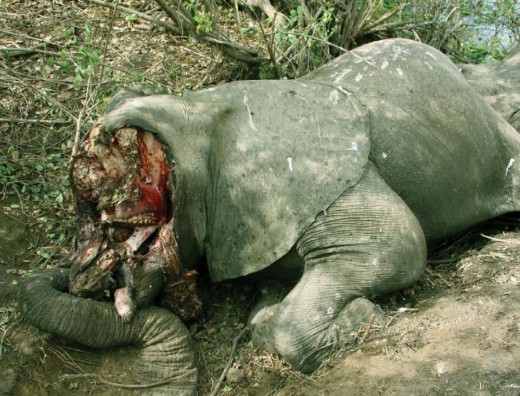
.
China’s influence in East Africa is fueling an upsurge in elephant poaching, gunrunning, and corruption according to a report on U.K. television Friday. A Channel 4 reporter spoke to people in villages and cities, wildlife managers, rangers, government officials, and illegal ivory sellers in Kenya and Tanzania—all of whom said China is the main buyer of banned ivory.
Filmed secretly, sellers told the journalist from Unreported World that during a presidential visit from Chinese Communist Party leader Hu Jintao in 2009, two hundred kilos of ivory was bought by Chinese diplomats and taken out of Tanzania.
The sellers did not say if Hu knew of the trade, but did say that a prominent diplomat from the Chinese Embassy frequently bought large amounts of ivory from them.
Kooky Gorman owns a wildlife park in Kenya. Accompanied by armed rangers, she took the reporter to many spots in her park, where elephant carcasses rotted, their heads split open to make it easy to saw the tusks off.
Many hides showed multiple bullet holes. The lead ranger said the killers had used AK47 automatic weapons to spray herds. The shootings were indiscriminate, killing young and old.
Gorman said the weapons were bought from neighboring Somalia where the civil war has continued since 1991.
The intensity of the poaching has been increasing for the past two years. In 2007 six elephants were poached from her park. In 2008, twenty-eight were poached. Fifty-seven were poached in 2009.
She says there is a threat of elephant extinction.
The Kenya Wildlife Service has strong rooms full of tusks and carved ivory taken during raids and confiscated at Nairobi airport. It has about 65 tons to 70 tons estimated at $10 million.
The U.N. recently rejected Zambia and Tanzania’s request to hold a one-off sale for their ivory stockpile, valued of approximately $15 million.
Since trade in ivory was stopped in 1989, some countries have been allowed to do a small amount of business in ivory if they have good conservation measures. Zambia and Tanzania are currently prohibited from any trade in ivory. The International Trade of Endangered Species of Fauna and Flora (CITES) annual meeting in Doha disregarded arguments that the sale could help police wildlife parks and stop the burden of protecting the horde of ivory.
Selous Game Reserve in Tanzania has 40,000 elephants.
On the TV program, a police informant who lived nearby in a village known for its illegal ivory deals said armed groups of 30 often came from Dara Salam in Senegal to take back ivory in 440-to-660-pound batches. (An average tusk weighs about 4.4 pounds.)
The informant, whose face was not shown for fear of reprisals, had had his house burned down recently.
Another man, who did not want to be identified as he had received death threats, was a safari operator who brings tourists to the Selous Reserve. “I think the wildlife department knows exactly what’s going on here,” he said. “There are some members of the games department who are poaching to supplement their pay and feed their families.”
He said he thinks movers are coming from China and the Far East to take bones and that they are in collusion with local authorities.
He said they could not get through the 15 to 20 policed roadblocks without help from “some very well-placed people.”
One illegal dealer said he had friends in airport security. “It’s no problem with money,” he told the reporter. “If you have money, it’s easy.”
There is a small industry carving the poached ivory for the East Asian trade. “Many people from China come and buy,” he said. There is a market for trinkets, seals, and chopsticks.
Chinese regime officials told Unreported World that they are against the illegal ivory trade and that Chinese diplomats did not illegally purchase or export ivory by misusing diplomatic immunity in 2009.
Most villagers have stood by while violence around the poaching continues. They felt threatened and were unable to prevent the elephant deaths. Now, many see tourism as the main way they can earn a living, so they are protecting the animals and habitat as much as they can.’

.
.
‘Ivory Stockpile Sale Rejected by U.N.’
[Source: Peter Valk, The Epoch Times, 20100324, ^http://www.theepochtimes.com/n2/content/view/31944/, accessed 20110829]
.
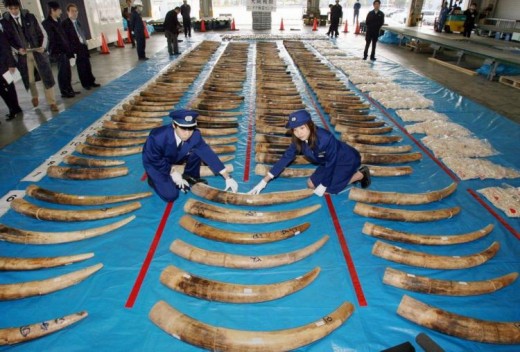 Custom officers display a total of 2.8 tons of ivory on March 1, 2007, a record amount seized in Japan, a top black market destination for elephant tusks.
The U.N.’s Convention on the International Trade of Endangered Species of Fauna and Flora rejected Zambia and Tanzania’s request to sell it’s stockpile of ivory.
(AFP/Getty Images)
. Custom officers display a total of 2.8 tons of ivory on March 1, 2007, a record amount seized in Japan, a top black market destination for elephant tusks.
The U.N.’s Convention on the International Trade of Endangered Species of Fauna and Flora rejected Zambia and Tanzania’s request to sell it’s stockpile of ivory.
(AFP/Getty Images)
.
‘Zambia and Tanzania’s request to hold a one-off sale for their ivory stockpile, valued of approximately $15 million, were rejected during the U.N.’s Convention on the International Trade of Endangered Species of Fauna and Flora (CITES) annual meeting in Doha. The increase of poaching and illegal ivory sales in both countries in 2009 were the main reasons for the rejection.
Since the ivory trade was banned in 1989, there has been an exemption that allows countries that have proven effective in conservation measures to have a small amount of regulated trade in ivory. Currently, Zambia and Tanzania are forbidden to sell ivory.
“It’s crucial that central and western African nations suppress the brazen poaching, mainly fueled by organized crime and illegal ivory markets openly operating within their borders before any further ivory sales take place,” said Sybille Klenzendorf, managing director of Species Conservation at WWF-U.S. in a press release.
According to a report from the Elephant Trade Information System (ETIS), which keeps track of ivory seizures, there exists a direct relationship between an increase in poaching and poor law enforcement. In the past two years, the number of elephants that were killed as a result of poaching has quadrupled.
Opponents of the ban say that Tanzania ought be allowed to dispose of their ivory stockpile as to avoid spending large sums of money on security and storage.
During the meeting, in which 175 countries participated, some animals were added to the list of protected species. The rise of e-commerce is now believed to be one of the latest and biggest threats to wildlife, as global Internet access has made it increasingly easy to buy and sell illegal wildlife products with little control.
“The transactions kind of come and go and take place before anybody really even knows it, leaving it to the post office to be enforcing this global regime of trade regulation,” Paul Todd, a campaign manager for the International Fund for Animal Welfare (FAW) was reported as saying by ABC news in Australia.
Back in 2005, a FAW investigation reported that in one week alone, over 9,000 live animals or products in five categories of animals were for sale on English-language Web sites, chat rooms and the popular auction site eBay. Some of the live animals found included a gorilla in London, and a Siberian tiger in the U.S. Body parts and products were also commonly found with ivory being common.’
.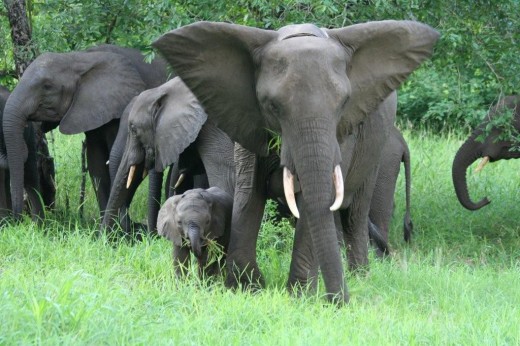
An African Elephant herd
(click photo to enlarge)
Elephants are very intelligent, lifelong loyal and have immense family bonds.
A female elephant listens and watches the photographer intently, with her young close to her side.
An elephant mother will protect her calf to her death.
.
.
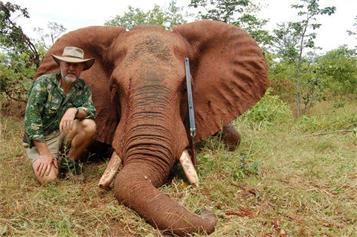 Australia’s big ‘game hunter’, Robert Borsak in Zimbabwe (2008)
Australia’s big ‘game hunter’, Robert Borsak in Zimbabwe (2008)
.

‘Macdonald’s game council thrill killer‘
by Andrew Clennell, State Political Editor, Sydney Morning Herald, 20090721, ^http://www.smh.com.au/environment/conservation/macdonalds-game-council-thrill-killer-20090720-dqui.html]
.
Robert Borsak (on the NSW Government’s Game Council) went to northern Zimbabwe to hunt elephants. On a two-week trip he killed several, including a bull elephant he shot in the head from a distance of six paces.”My reflexes took over as the rifle fired … he went down, as if in slow motion,” writes Mr Borsak in an article entitled Bulls in the Rain posted on the internet. “It was awesome. He did not know what had hit him.”Back in Australia, Mr Borsak has bagged another prize. The big game hunter and former vice-chairman of the Shooters Party is being paid $342 for each sitting day as chairman of the Game Council of NSW, one of 58 quangos which operate under the Primary Industries Minister, Ian Macdonald.
Mr Borsak hopes to run for the Shooters Party at the next election. If successful, he would join a party that now holds the balance of power in the upper house and is holding the Government to ransom after Mr Macdonald failed to negotiate through cabinet the right to shoot in National Parks.It is an example of the kind of interests the embattled Mr Macdonald is accused of helping to protect in some of the committees and statutory bodies he oversees.Mr Borsak is being paid $342 a sitting day for his part in regulating hunting in this state. Conservationists say the Game Council’s only purpose is to win the Shooters Party votes.Last week there were revelations the minister spent close to $150,000 on a wine industry council he set up, chaired by his friend Greg Jones; and that the minister had put other Labor identities – such as union boss Russ Collison and former Labor MPs – on quangos.The Herald learned yesterday Mr Macdonald appointed a friend of 25 years, John Gerathy, the law partner of former Labor deputy prime minister Lionel Bowen, to the wine council and the Homebush motor racing board.
Mr Macdonald is under siege. Yesterday the acting Opposition Leader, Andrew Stoner, referred him to the Independent Commission Against Corruption over claims he gave special treatment to another Labor mate, the former construction union president John Maitland, over granting an exploratory licence for a Hunter Valley mine.
The Premier, Nathan Rees, refused to comment yesterday when asked if the Left assistant secretary Luke Foley, who wants Mr Macdonald’s upper house seat, would be a better cabinet minister than Mr Macdonald.
As for Mr Borsak, he was resentful yesterday that he might be included in a story to do with Mr Macdonald.
The Game Council has received more than $11 million in government funding since 2002 and $3.5 million last year, despite promises from Mr Macdonald it would end up being self-funded.
Mr Borsak said the Game Council was set up in 2002, before Mr Macdonald was minister, and should not be lumped in with other committees as it was a statutory body. He said he was a businessman who received “a grand total of $1368 for last financial year for about 60 days’ work for the council”.
“Why would there be a conflict of interest,” Mr Borsak said, when asked whether his involvement in the Shooters Party might mean he should not be involved in the Game Council. He said of the Zimbabwe hunt: “The fact is I do it [the hunt] and I do it legally and I did it as part of licensed conservation programs. The … tusks belong to the Zimbabwean Government.”
The executive director of the Nature Conservation Council, Cate Faehrmann, said it was time the Game Council’s “activities were thoroughly scrutinised”.
Mr Maddonald’s “aggressive support of the establishment of game reserves and hunting in National Parks is all the more insidious when you realise at least one of the people behind this push likes to kill elephants in his spare time,” she said.
“By pumping millions of dollars into the Game Council, Minister Macdonald is sanctioning bloodsports.”
Mr Stoner called for Mr Macdonald to be sacked. “It seems every day there are more doubts raised about Ian Macdonald … There will be more, so Nathan Rees should do the right thing and sack this minister.”
.
.
‘The cruelty and corruption of the elephant hunt’
[Source: Sydney Morning Herald, following letters to the editor, 20090722, ^http://www.smh.com.au/environment/conservation/the-cruelty-and-corruption-of-the-elephant-hunt-20090722-dtb3.html]
.
Letters to the Editor
‘I began hunting as soon as I was old enough to use a rifle. But the photo of Robert Borsak gloating over the body of an elephant he shot in Zimbabwe fills me with disgust (“Macdonald’s game council thrill killer”, July 21).Zimbabwe is one of few African countries to allow this practice. People typically pay about $US20,000-$26,000 ($25,000-$32,000) for this privilege. Bulls are more expensive, presumably because of their tusks. Where does this money go? Here is a hint.
Advertisement: Story continues belowThe BBC reported a decade ago that the government of Robert Mugabe earned US$2.5 million by selling 20 tonnes of elephant tusks, although the ivory trade had been banned. Zimbabwe lies about its elephant population to get around the ban. This practice is probably greater today.As the economy collapsed, the Zimbabwean Army, the key to Mugabe’s survival, cancelled all contracts to supply beef. The Zimbabwean Conservation Task Force reports soldiers have complained the only meat they are given is from elephants. So in addition to the immense pleasure Borsak apparently feels in the senseless destruction of a great creature, he can also take pride in doing his bit to keep Africa’s worst despot in power.’~ Don Moore, Lilyfield
.
.
‘I loved the juxtaposition of the stories about Robert Borsak, and Sining Wang and Edward Liew (“Don’t have a cow man – it’s got rights”, July 21). Thank heavens for the next generation of intelligent and compassionate thinkers. I hope it is only a matter of time before Wang and Liew can flex their legal muscles against thug shooters such as Borsak. The sooner they are banned from indulging in their cruel and destructive hobbies, the better.’~ Belinda Connolly, Caringbah
.
.
‘It has been said that people get the politicians they deserve.What does it say about the people of NSW when there is a danger of Robert Borsak standing for a seat in Parliament – a man who admits to the thrill of downing a bull elephant “from a distance of six paces”?’Jill Klopfer, Wahroonga
.
.
‘So Robert Borsak killed elephants in Zimbabwe “as part of licensed conservation programs”.The corrupt Zimbabwean Government and conservation are complete strangers, as anyone who has anything to do with trying to save what is left of Zimbabwe’s wildlife can tell you.’Colleen Riga, Potts Point
.
.
‘Robert Borsak says “the tusks belong to the Zimbabwean Government”. No – the tusks belong to the elephant.’Jean-Marc Russ, Darlinghurst
.
.
‘It comes as no surprise to learn of Ian Macdonald’s patronage of hunters. The minister has shown scant regard for the welfare of animals, as those of us working in animal charities can attest. His $3.5 million for the Game Council compares with the $533,000 in funding he announced in April to be split between the RSPCA, Animal Welfare League, WIRES, Cat Protection Society and the Domestic Animal Birth Control Co-operative Society.The Government opposes Clover Moore’s bill to reduce the suffering of cats and dogs by regulating their sale, and even pleas for an inquiry into the welfare of companion animals have been rejected. A minister who gives priority to working with a hunter who describes shooting an elephant as awesome is hardly likely to care that tens of thousands of cats and dogs are killed annually on his watch.’
Kristina Vesk chief executive, Cat Protection Society of NSW, Newtown
.
– end of article –
Tags: African Elephant, Chinese illicit ivory trade, cites, Convention on International Trade in Endangered Species of Wild Fauna and Flora, Environmental Investigation Agency, illegal ivory trade, Ivory trafficking, ivory trinkets, Japanese illicit ivory trade, Robert Mugabe, Selous Game Reserve, Thai illicit ivory trade, TRAFFIC
Posted in Africa, Elephants, Threats from Poaching and Poisoning | 1 Comment »
Add this post to Del.icio.us - Digg
|
|
 March 2013: she’s almost dead, like her entire species cornered in the wild
March 2013: she’s almost dead, like her entire species cornered in the wild Dato’ Lee Yeow Chor
Group Executive Director,
Dato’ Lee Yeow Chor
Group Executive Director, .
. Arnott’s Tim Tam, proudly killing Orangutans
(it is one of Australia’s largest selling products that includes Palm Oil in its manufacture)
Arnott’s Tim Tam, proudly killing Orangutans
(it is one of Australia’s largest selling products that includes Palm Oil in its manufacture)
 .
. An adult orangutan looks down from its treetop home as the forest in Ketapang, Borneo, is bulldozed (Caters)
Source: ^http://uk.news.yahoo.com/orangutan-rescue-borneo–primates-deforestation-palm-oil-ketapang-mother-and-baby-104041487.html#tZX7oWc]
An adult orangutan looks down from its treetop home as the forest in Ketapang, Borneo, is bulldozed (Caters)
Source: ^http://uk.news.yahoo.com/orangutan-rescue-borneo–primates-deforestation-palm-oil-ketapang-mother-and-baby-104041487.html#tZX7oWc]

















































